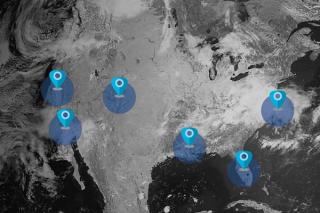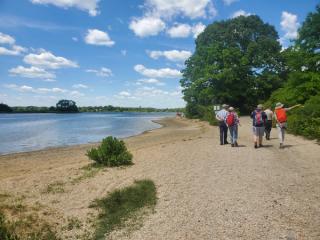
Buffalo Beach Coastal Management Plan
- Client Name
- Thames-Coromandel District Council
- Location
- Whitianga, New Zealand

Challenge
The shoreline at Buffalo Beach, Whitianga, has been subject to the effects of natural coastal processes, including several major storm events, over the years. Consequently, management actions have been undertaken, including dune planting, groynes, rock walls and sandbag walls to help mitigate the effects of erosion.
Numerous reports have been completed to assess various issues that have led to the aforementioned management actions being implemented, but Thames Coromandel District Council (TCDC) were seeking to understand coastal management options across the entire beach, mindful that different parts of the beach have different requirements but will still be intrinsically linked. The key objective of the project was to inform, guide and assist TCDC regarding the future management of Buffalo Beach over the short term (15-20 years) so as to best align with the development of the longer-term objectives of the Shoreline Management Plan (SMP) across the district.
Solution
Our team were engaged to develop beach management options for the coastal area extending from the Whitianga Wharf to the northern end of Brophys Beach (Ohuka).
Buffalo Beach was separated into different coastal compartments based on local geomorphology and existing management regimes to determine the most appropriate course of action along the study frontage. This approach allowed for the consideration of different management requirements, such as the location of critical infrastructure and private property.
A detailed investigation of the coastal hazard risk to respective compartments was undertaken, which involved an analysis of the beach monitoring data sets, historic aerial imagery, and erosion predictions to better understand the site-specific management requirements within each compartment. In conjunction with this, a workshop was also held with key stakeholders to better understand their individual requirements and perspectives. This information was then used to develop a range of viable coastal management options for each of the identified coastal compartments that were considered appropriate over the short-term timeframe as per the project brief. Where appropriate, high-level concept drawings for the different management options were drafted with high-level costings for context.
Our coastal processes expertise mainly focuses on geomorphic assessments of a particular coastal system, which is then supplemented by simplistic modelling techniques to support our findings. Our skills are strong in the processing and interpretation of beach monitoring records, which often serve to provide an understanding of beach dynamics and the nature of any erosion issues. This then allows for site-specific management responses, in keeping with best practice guidance, as opposed to more traditional larger-scale engineering responses.
Challenge
The Coastal Management Plan provides a list of recommendations and actions in order of priority for TCDC to consider implementing in the short-term. This included a recommendation for further investigations into larger management strategies such as managed retreat and beach nourishment, which may be considered appropriate response options in the medium to long-term to tie in with the SMP work.
Taking direction from the Ministry for the Environment’s Coastal Hazards and Climate Change Guidance (2017) document, our assessment also includes recommendations for future monitoring requirements needed to support an adaptive pathway planning approach with regard to natural environmental changes and hazard events.

